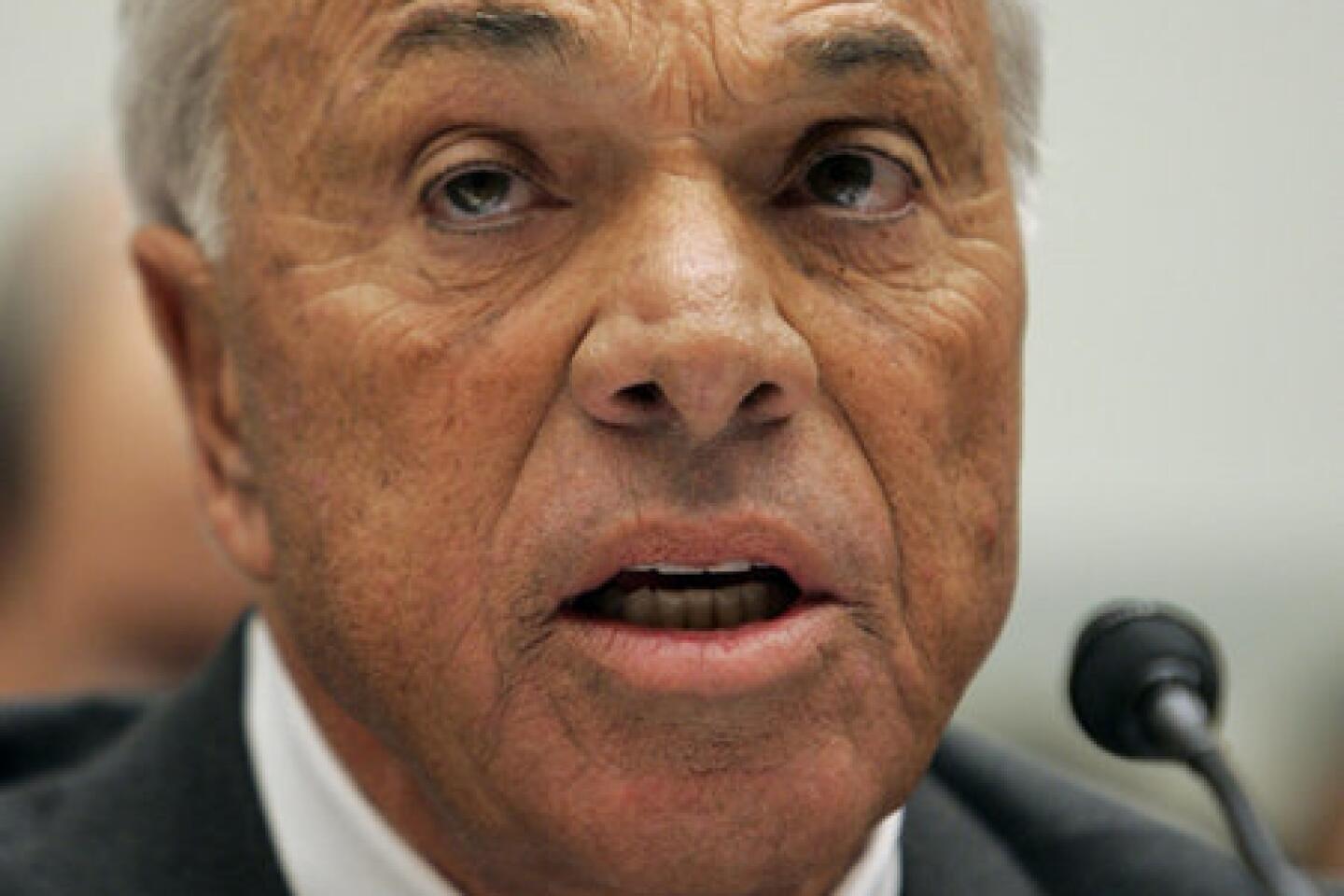Forget too big to fail: Some banks now too small to succeed
Most Americans have gotten an earful about the too-big-to-fail banks, which created a financial tsunami that engulfed the world â only to be rewarded with a bailout by Uncle Sam.
But what about the little banks caught in the ensuing economic and regulatory backwash? Banks that wrote no dicey home loans, sold no toxic securities, never considered trading leveraged derivatives â the ones whose shareholders and customers live within an easy drive of the head office.
While the too-big banks have gotten even bigger, smaller community bankers are finding it increasingly tough to survive, in part because they must commit more of their limited resources to complying with new regulations stemming from the global near-meltdown. That has increased pressures on the owners and directors of small banks to sell out to their larger brethren, they say.
Indeed, many community banks are now too small to succeed.
âRegulatory burden is absolutely a factor for many smaller banks that are looking to exit,â said Steven Gardner, president of Pacific Premier Bank in Irvine, which has acquired two failed banks and two open banks in the last two years.
âAnd itâs absolutely going to continue,â said Gardner, whose bank, with 13 offices and $1.6 billion in assets, is scouting more acquisitions.
Itâs the latest chapter in a long decline in the number of U.S. banks. At the end of 2007, right after the financial crisis struck, the government insured 8,534 commercial banks and savings institutions â down 52% from 1984. As of Tuesday, the count was 6,926, down 19% since the crisis began.
Of the 1,608 banks that have disappeared since the financial crisis â most of them community lenders â nearly a third were shut down by regulators in the biggest rash of bank failures since the savings and loan debacle in the 1980s. The rest were attributed to consolidation as bigger banks gobbled up smaller players.
The irony is that community banks generally avoided the kind of subprime home lending that brought down the housing market and the economy. They left such risky mortgages to large national lenders. In urban California, most community banks are small-business lenders. Most of the ones that failed had overdosed on loans to land developers and home builders during the housing boom.
Many others remain well-managed with profitable niches, analysts say. And they have shared some legacy problems from the financial crisis with larger banks, including weak loan demand in a sluggish economy and low interest rates that have pinched lending profits.
Yet small community banks, on average, remain far less profitable than larger institutions.
A Federal Reserve Bank of San Francisco analysis of one profitability gauge â return on assets â illustrates the pinch. At commercial banks in the Western U.S., those with less than $1 billion in assets reported an average return of 0.7% in the second quarter this year, compared with 1.1% for banks with $1 billion or more.
Gary Findley, an Anaheim-based consultant to small banks, attributed the difference mainly to the cost of compliance with regulations. He said the gap is especially great between banks with less than $500 million in assets â the smaller community banks â and those with assets of more than $1 billion. Major banks, he said, can better absorb the costs on their bigger balance sheets.
An example of how this affects smaller banks can be seen at Friendly Hills Bank in Whittier, a small-business lender with $100 million in assets whose president, Jeffrey K. Ball, is chairman of the California Bankers Assn.
When Friendly Hills opened in 2006, complying with regulations required about half the time of one full-time employee, Ball said. He now devotes the equivalent of 1 1/2 full-timers to the task, and thatâs likely to increase to two full-time equivalents as new regulations continue to be phased in, Ball said. Thatâs a strain on a small staff of two dozen.
Many bank investors believe that they canât get a decent return from banks with less than $500 million in assets, said Irvine bank consultant Edward Carpenter, who has helped scores of small banks get started.
By this gauge, only 38% of banks and thrifts headquartered in California would measure up, and just 19% of banks nationally.
Carpenter â who heads a partnership that has acquired a cluster of California community banks with assets totaling $3.8 billion â said $1 billion in assets is the threshold for financial viability.
âAnd George Bailey thought he had issues!â Carpenter said, referring to the Depression-era banker played by Jimmy Stewart in the 1946 film âItâs a Wonderful Life.â
In reaction to the financial crisis, legislators and regulators took major steps, such as the landmark Dodd-Frank legislation in Congress, to ensure that banks would run fewer risks and have greater cushions of capital in the future. Smaller banks have been exempted from many of the new requirements, such as those requiring bigger banks to keep more reserves as a check against losses.
And small local banks that offer home loans in underserved rural areas have been allowed to make certain mortgages, such as those with balloon payments, that would come under greater scrutiny from regulators if made by banks in urban areas.
Richard Cordray, head of the Consumer Financial Protection Bureau, created after the financial crisis, has encouraged community banks to make potentially riskier home loans to borrowers who might not qualify under strict new regulations designed to rein in larger banks. Smaller banks can better size up borrowers for unconventional loans, Cordray said, because they have deeper relationships with local customers.
Small bankers express gratitude for such policies. But they note that they must deal with bank examiners, the front-line regulators from the U.S. Office of the Comptroller of the Currency, the Federal Reserve, the Federal Deposit Insurance Corp. and state banking departments.
The examiners, who perform field audits of banks for soundness, have considerable discretion, the bankers say. And after failing to prevent the many collapses that occurred after the financial crisis, they are less likely to encourage small banks to stray from the standard path â deep customer relationships or not.
As an example, Ball, the community banker in Whittier, noted that regulatory policy doesnât require smaller banks to perform the sophisticated and expensive levels of risk analysis that have been imposed on large banks with complex businesses. But a field-level examiner might still tell a small bank that it should do so as a matter of âbest practice,â he said.
âYouâre dealing with someone who can shut you down,â Ball said. âMost community bankers arenât going to challenge the examiner and say: âWe donât have to do that, so weâre not going to.ââ
Twitter: @ScottReckard
More to Read
Inside the business of entertainment
The Wide Shot brings you news, analysis and insights on everything from streaming wars to production â and what it all means for the future.
You may occasionally receive promotional content from the Los Angeles Times.
















